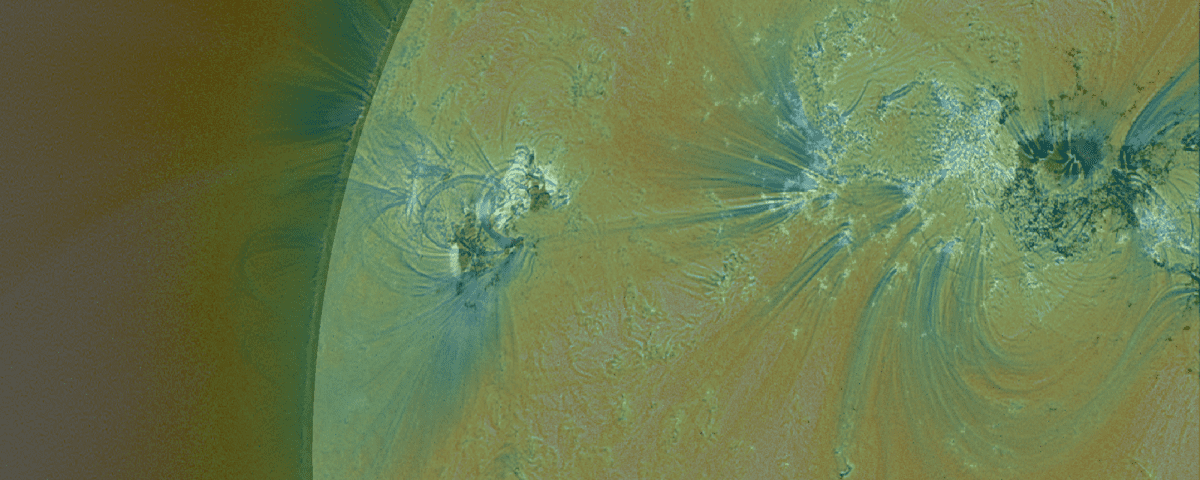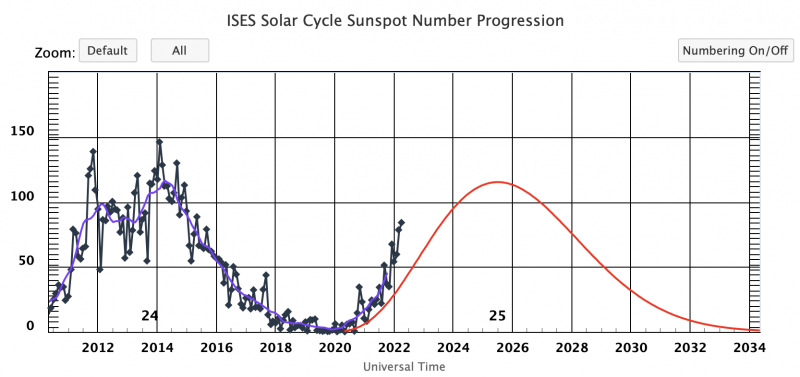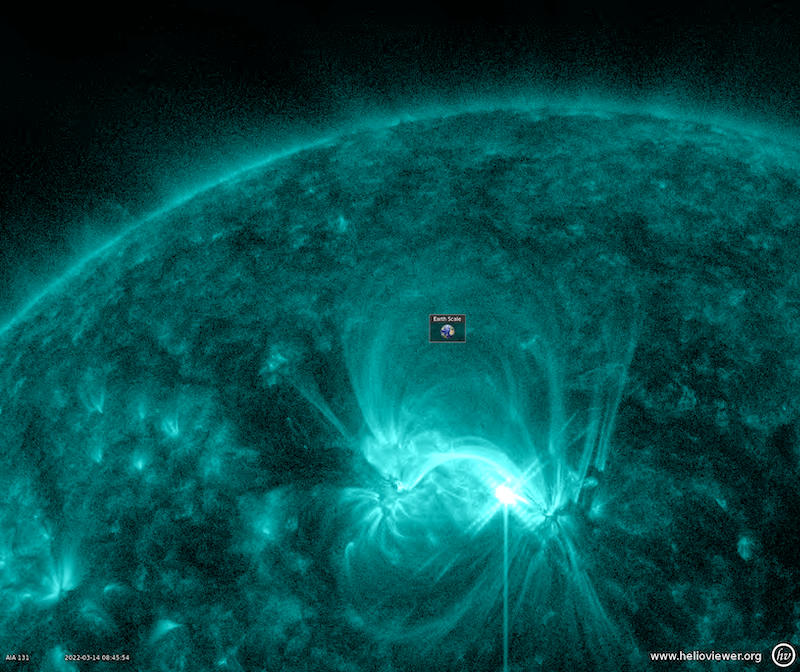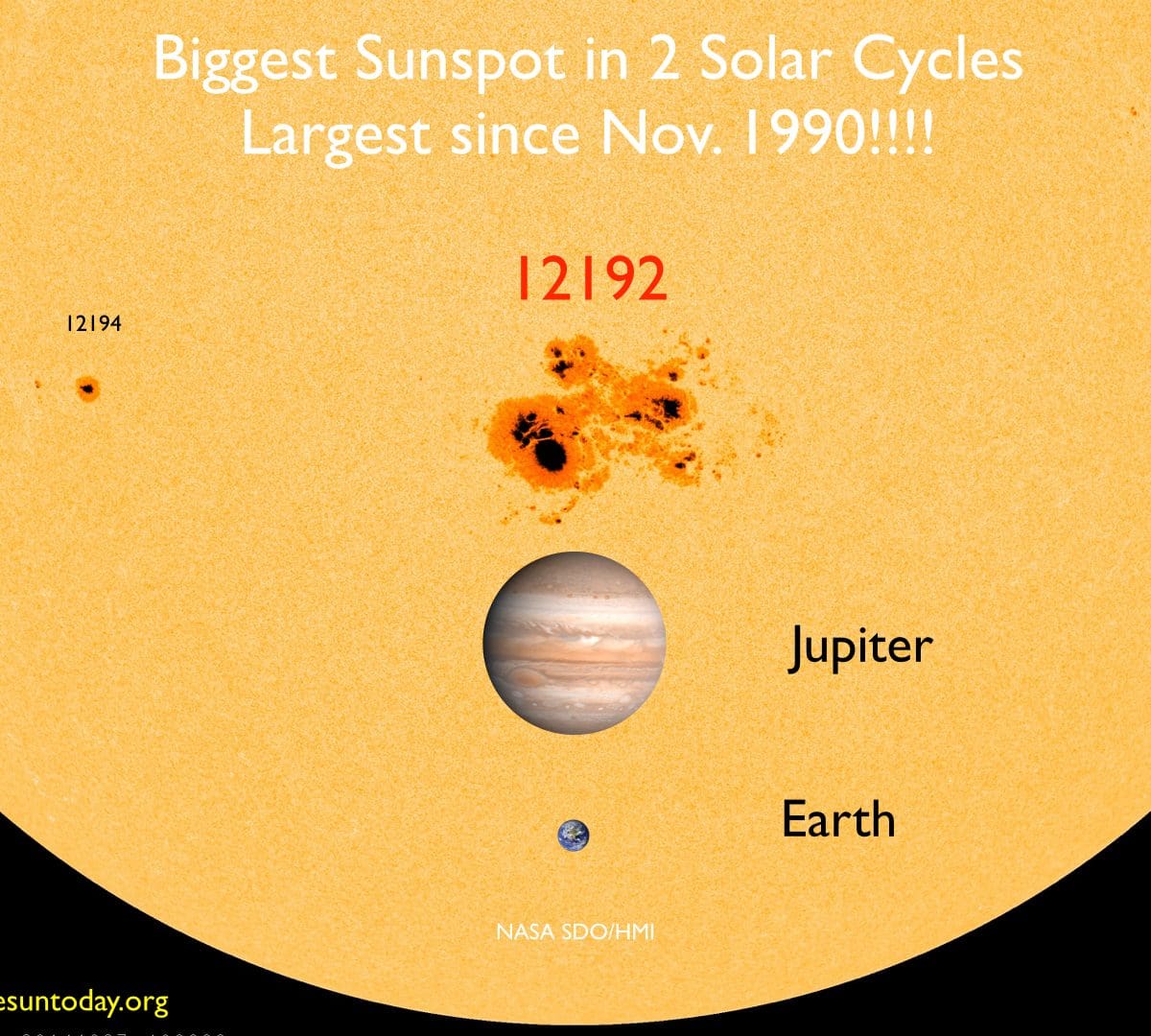
Wiggly Jiggly Loops by 4 flares from an evolving sunspot
AR11748 showed us some exciting yet basically benign activity. A little image processing helps us really see certain aspects of the activity.
http://www.youtube.com/watch?feature=player_embedded&v=woycUmQ24WI
Keep an eye out for wiggling loops set in motion by the eruptions (from the X flares – all 4 are in the video from May 13 – 16, X1.7, X2.8, X3.2, X1.2). In particular, you can see the magnetic loops, shown in black/blue, connecting both within and between sunspots. How far away can you see loops reacting to the explosions? Waves are propagating at least 1 million mph across the solar surface. Other loops move just from the motion of the sunspots at the photosphere. Moving sunspots cause twisting and energy buildup that is released in these violent eruptions (like twisting rubber bands until they snap.) They release flashes of light (flares), they heat plasma and move material (coronal mass ejections.) The white patches are positive magnetic field regions, the black patches are negative (these are the magnetic fields of sunspots). This is like a bar magnetic on its side with magnetic field going out from the positive (north pole) into the negative (south pole.) If you look close you can see the white and black patches moving and changing. The SDO 171 Angstrom camera images are shown in black/blue. The blue-green glow is from the 131 Angstrom SDO camera images. The black and white magnetic field come from SDO/HMI magnetogram images.
1. First segment is an HMI magnetogram with a 171 image overlaid (the image is negative), zoomed in on AR11748.
2. Second segment is the same but with 131 image added over and a slightly tighter zoom.
3. Same as first second but full sun.
credit: NASA/SDO/helioviewer





